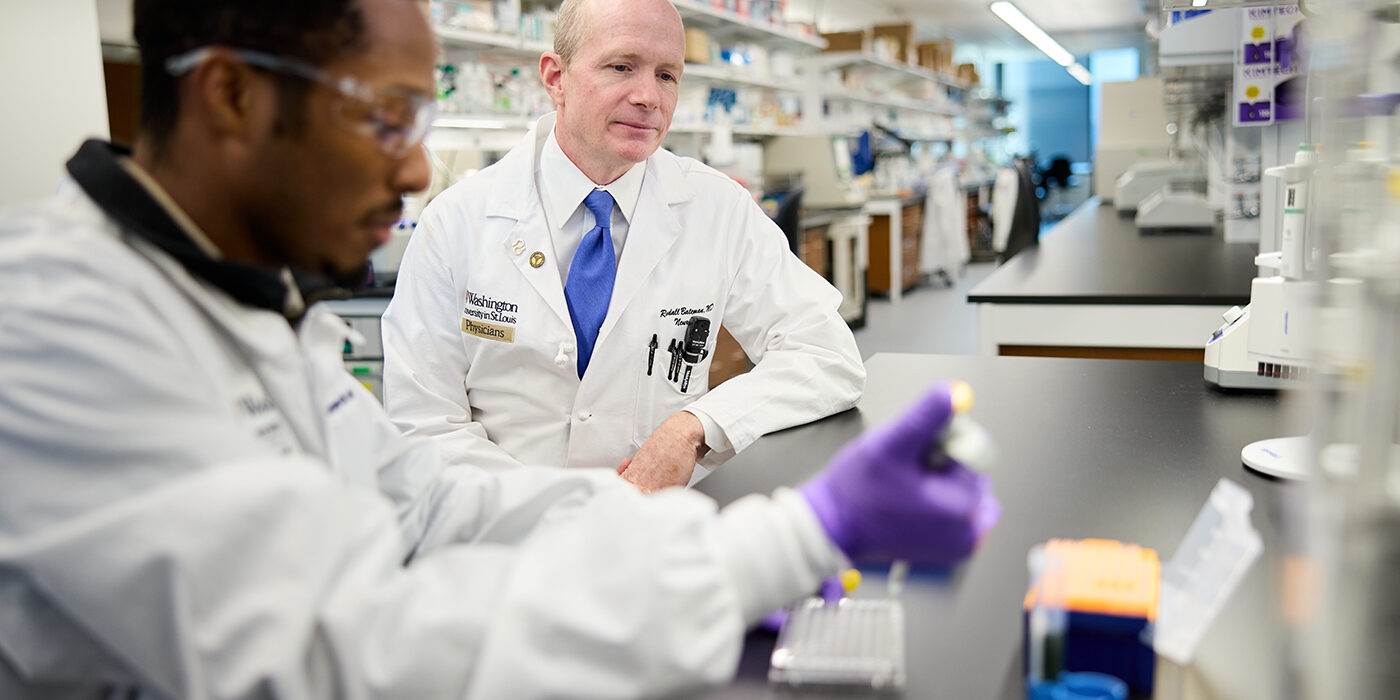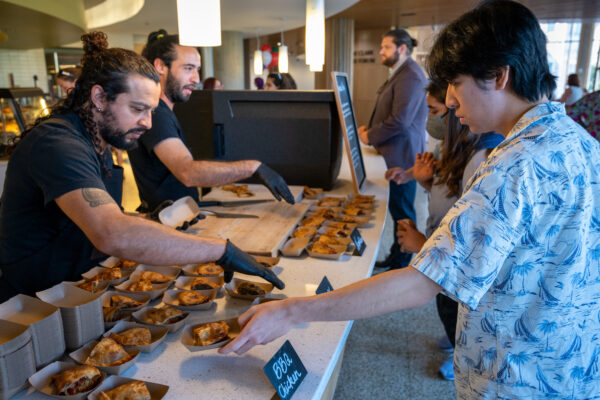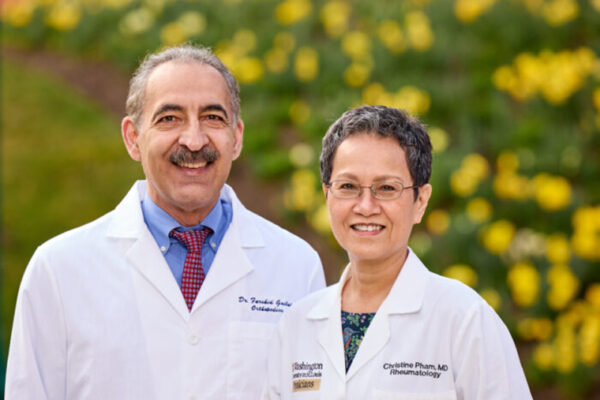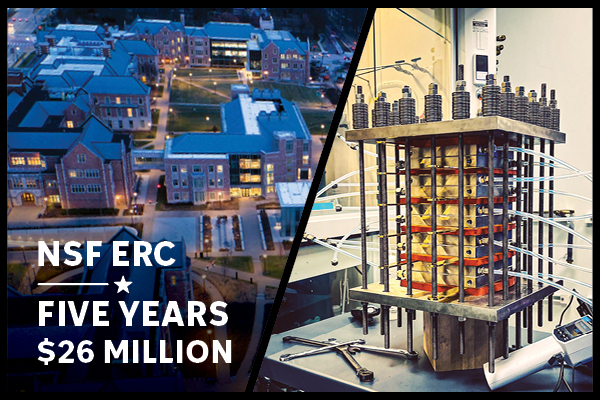For the first time, annual research funding to Washington University in St. Louis has surpassed $1 billion. External funding supports WashU investigators tackling big challenges from Alzheimer’s disease to air pollution to childhood depression. Research funding also ripples across the economy, sparking job growth, new construction and local spending, said Chancellor Andrew D. Martin.
“There is no question that this is an exciting time to do research at WashU,” Martin said. “This milestone is a reflection of the tremendous growth in research at WashU and the impact on the local economy.”
Funding from federal agencies, foundations, donors and other external sources has nearly doubled in the past decade, growing from $532 million in fiscal year 2014 to more than $1 billion in fiscal 2024. The reasons why are many, said Mark Lowe, MD, PhD, vice chancellor for research and the Harvey R. Colten Professor of Pediatric Science at the School of Medicine. WashU has stepped up its pursuit of external grants; strengthened its reputation as a trusted steward of funding dollars; and increased spending on necessary staff, infrastructure and equipment. But the big reasons, Lowe said, are the growth in WashU’s research faculty and the quality and the urgency of the research conducted at WashU.
Most research funding flows to WashU Medicine, one of the nation’s top medical schools. In fiscal 2024, WashU Medicine received $857 million in funding, including $576 million from the National Institutes of Health (NIH). Of all U.S. medical schools, WashU Medicine is ranked No. 2 in the amount of funding it receives from NIH, second only to University of California, San Francisco. This ranking reflects the school’s commitment to leading-edge research that will shape the future of medicine and its ongoing success in growing its research faculty at a rate over the national average for medical schools. From 2017 to 2023, WashU Medicine increased the size of its research faculty by 30%. A strong base of research funding also helps WashU Medicine recruit top-tier faculty who further elevate the caliber of research and promote a culture of innovation.
Among the WashU Medicine projects funded by the NIH over the past year are two Specialized Programs of Research Excellence (SPORE) centers to promote innovative research in endometrial cancer and pancreatic cancer; an international effort led by WashU Medicine researchers to extend recent advances in Alzheimer’s treatment to people with Down syndrome, who as a group have a high risk of Alzheimer’s; a study of the impact of asthma-like chronic wheezing illnesses on the brain development of children in the St. Louis area; and a multicenter study led by WashU Medicine researchers to determine the root causes of brain cell death in fatal pediatric neurodegenerative diseases.
Danforth Campus researchers also saw an increase in funding, including grants to create hydrogen fuel from sunlight and water; to build a device to measure lunar chemistry; and to launch a hub for multi-omics, which uses big data to better understand the factors that lead to disease.
A growing number of grants are funding studies and projects that address regional issues such as asthma rates among St. Louis children; colon cancer in rural Missouri; workforce development for the region’s underemployed; and flooding risks in Cahokia Heights, Ill. Lowe expects even more funding for region-specific research with the launch of the planned School of Public Health.
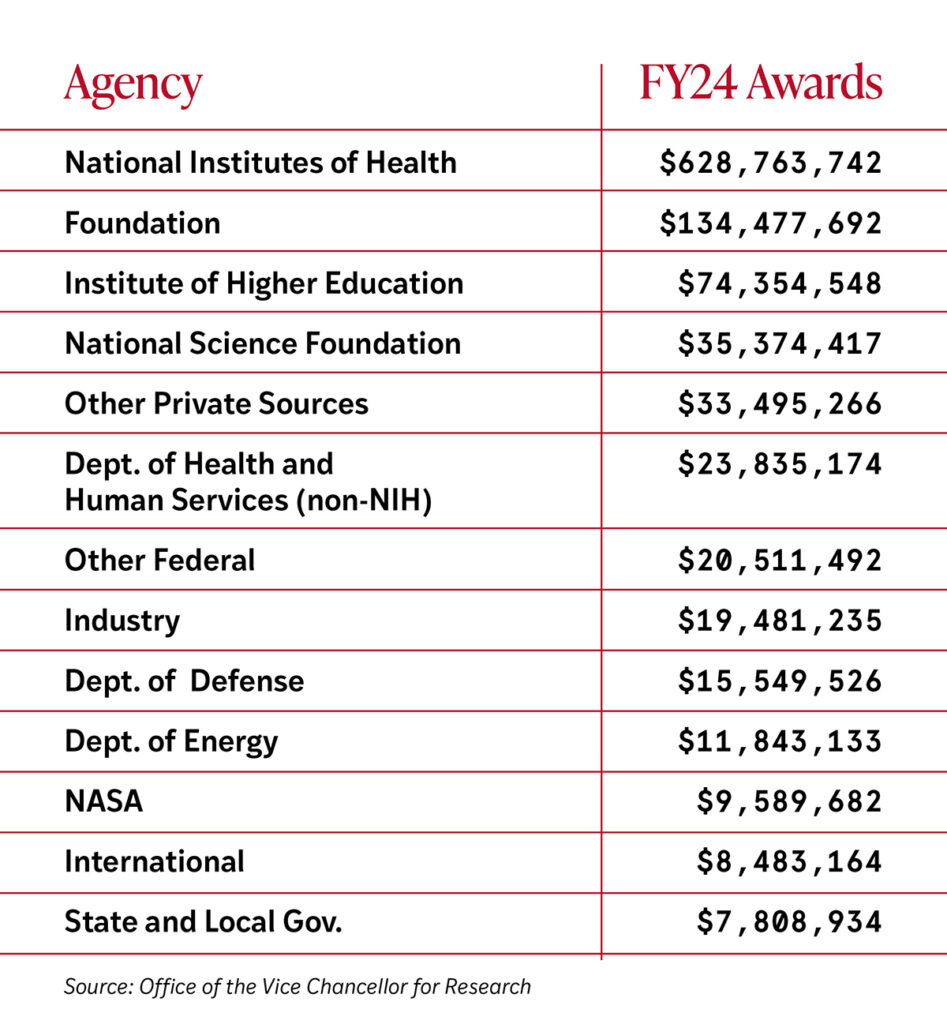
“A lot of our public health work directly interacts with communities to help prevent disease and not just manage it,” said Lowe, a pancreatitis researcher. “Prevention is an important part of what we do, and those efforts will increase in the upcoming years.”
Research funding not only makes St. Louis more sustainable, equitable and healthful, it helps drive growth as well. Economic data shows that every $1 million in research funding creates 11 local jobs. Since 2016, the School of Medicine has added some 750 faculty members including physicians, researchers and research technicians.
“The reason we can attract top-notch researchers to St. Louis is because of the science and the collaborative atmosphere that is here,” said Lowe, noting that Washington University is now the region’s No. 2 employer. “There are so many new technologies and techniques that allow us to ask questions you couldn’t even ask a decade ago. Our investigators are developing and using these technologies to lead us into a new era of medicine. And, equally important, our investigators work together to advance science and innovations.”
In addition, WashU’s bold vision to invest in new state-of-the-art research facilities draws researchers to WashU who, in turn, secure additional funding to enable life-changing scientific discoveries. The newly opened Jeffrey T. Fort Neuroscience Research Building stands as a shining example.
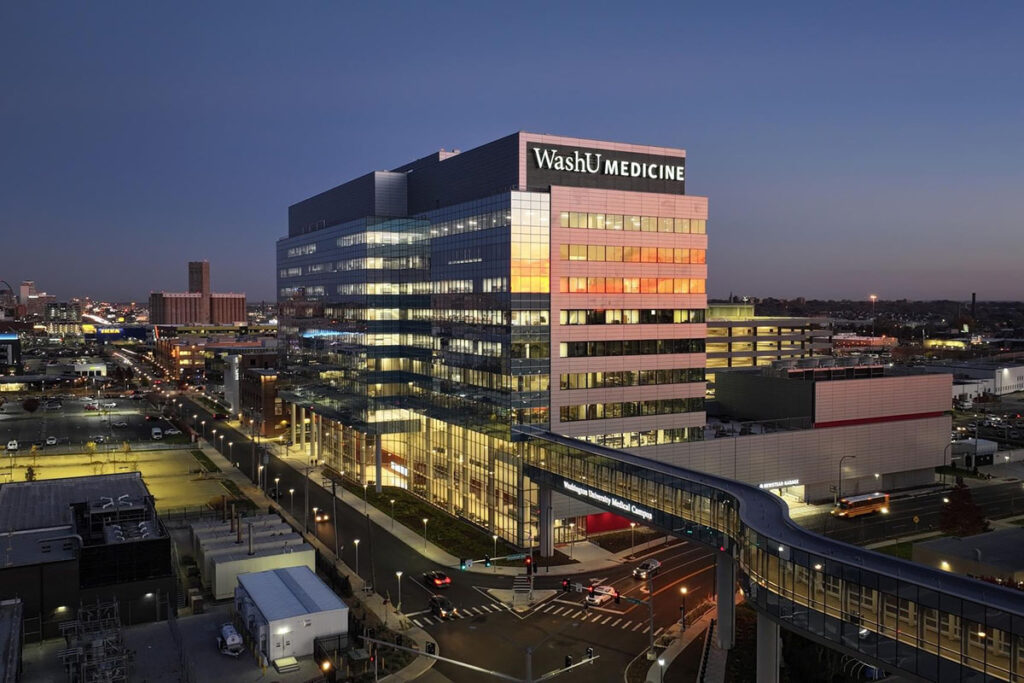
The 609,000-square-foot, 11-story building — one of the world’s largest devoted to neuroscience research — opened in January on the Medical Campus. WashU invested $616 million to construct the building. It brings together diverse research teams with the aim of fostering collaborations and discoveries that will lead to new drugs and diagnostic tools. About 120 research teams working in fields ranging from Alzheimer’s and other neurodegenerative diseases to brain tumors to pain now work in the building, and that number is expected to grow.
WashU Medicine’s Operations & Facilities Management Department saw the building’s construction as an opportunity to promote positive growth in the St. Louis area by generating local jobs. The department also worked with the project’s main contractor, McCarthy Building Companies, to provide opportunities for area minority- and women-owned business subcontractors to participate in the construction and created training and mentorship programs to grow the workforce.
“Neuroscience research is the cornerstone of unlocking the mysteries of cognition, behavior and disease. WashU Medicine researchers’ groundbreaking discoveries in neurodegeneration, mental health and many other areas are leading to innovative treatments and new devices that improve patient care,” said David H. Perlmutter, MD, executive vice chancellor for medical affairs, the George and Carol Bauer Dean of the School of Medicine and the Spencer T. and Ann W. Olin Distinguished Professor. “But there’s more we want to accomplish, and expanding our research faculty is part of our strategy to attract more funding for high-impact research. We also recognize that research funding doesn’t just advance medical science; it directly benefits our local community by driving economic growth, creating jobs and improving health care outcomes. When we invest in research, we invest in the health and prosperity of our neighbors.”
Beyond its significant direct benefits, WashU helps create new businesses. St. Louis is now home to 40 startups commercializing WashU discoveries. Those businesses employ about 1,100 workers and have raised over $425 million in investment capital, most of which goes into the local economy. WashU also strengthens the broader scientific ecosystem.
“Our collaborations with Saint Louis University, University of Missouri, Cortex, the Danforth Plant Science Center and others help each of those entities improve their own research and attract more funding,” Lowe said. “That impact is harder to measure, but those partnerships make St. Louis an attractive place to be.”
Lowe expects external funding to continue to climb steadily. In addition to more awards for public health, he anticipates significant funding increases for neuroscience research, specifically for dementia studies. He also expects big jumps in funding for mental health, precision medicine and the environment. Indeed, in the past month WashU Medicine researchers received two major NIH grants, totaling $90 million over three years, to prepare for the next pandemic by developing vaccines and antibody-based therapies for viruses with pandemic potential. Much of that research will take place in newly constructed, specially designed laboratories on the Medical Campus known as biosafety level-3 (BSL-3) labs. Such labs provide a safe, secure environment for conducting research on highly infectious viruses and play a pivotal role in advancing understanding of infectious diseases.
And the McKelvey School of Engineering recently announced the largest grant in its history — a five-year $26 million grant from the National Science Foundation to transform manufacturing toward zero or negative emissions by converting carbon dioxide ultimately into environmentally friendly chemicals and products.
“This is not just another grant — this center has the opportunity to transform the U.S. economy,” said Joshua Yuan, chair of the Department of Energy, Environmental & Chemical Engineering at McKelvey Engineering.
Meanwhile, the university is increasing institutional funding as part of its “Here and Next” initiative, which includes the School of Public Health, the Center for the Environment, the Digital Transformation initiative and the St. Louis Confluence Collaborative.
“Here and Next really encourages interdisciplinary cooperation. That has always happened, but it’s happening on a much greater scale now,” Lowe said. “Through cooperative efforts of investigators from the School of Medicine, McKelvey Engineering, the Brown School and other schools, we have funding opportunities we didn’t have before. There’s a lot of untapped potential here for innovation that will benefit the entire region.”
Tamara Schneider, WashU Medicine senior medical science writer, contributed to this report.
